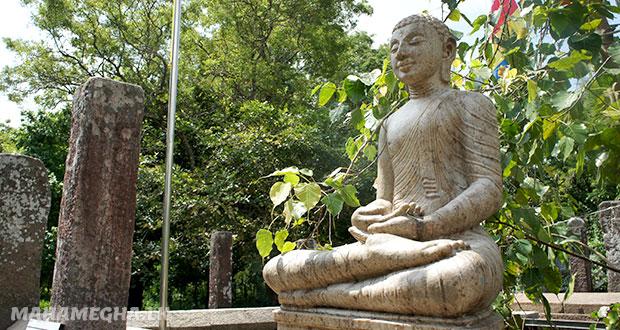Once the Supreme Buddha comparedthe extent of His knowledge to the countless number of leaves in a forest and how little amount (few leaves that fit into His single palm) of that knowledge we needed to realize the Nibbāna. Even with such a vast knowledge and wisdom, the Buddha hada very simple and humble life style. Most of all, His compassion towards the beings was unimaginably wonderful. Because His teachings were based on that incredible compassion arose from His marvelous heart, the Dhamma is the only wisdom, the philosophy, the doctrine that could help heal the world, whichis currently passing an erratic time period. Among a great number of teachings of the Supreme Buddha, the teachings of the Four BrahmaVihāras or the Four Deeds or Adobes of the Brahmas (Maithri: loving-kindness, Karunā: compassion,Mudithā: happiness towards others fortune, and Upekkhā:equanimity)are vital for us today.
A person can treat another with love and kindness (the first Brahma Vihāra). A good example is the love and kindness a mother shows to her only child. The Buddha taught us to spread the love and kindness towards every being of any size and in any direction. Cultivation of such love and kindness is known as the Loving-kindnessmeditation. One could spread the loving-kindness meditation as“may I be free from hatred,”“may I be free from ill-will,”“may I be free from jealousy,” “may I be free from mental and physical suffering,”“may I live well and happy,” and “may I attain the ultimate comfort.” The meditation then can be spread towards your parents, relatives, friends, and everyone else, including your enemies. Loving-kindness can then be spread to all beings in your home, city, country, and the world. It is then spread to all beings in all worlds. This method of spreading loving-kindness towards all beingsby defining a particular area was shown as the “MahaggataChētōvimukkti” by the ArahantAnurddhaThero(AnurddhaSutta, 3rdpart of theMajjimaNikāya).The loving-kindness can be further spread to every being in all ten directions (north, north-east, east, south-east, south, south-west, west, north-west, up, and down). This way, it is called “AppamānhaChētōvimukkti”.
Compassion, which is the second Brahma Vihāra,is the kindness that someone shows towards another, and the person with compassion hopes for others’ well-being. He wishes others to be free from suffering and be happy and comfortable. One with compassion will help another when in need. The third Brahma Vihāra is the “happiness towards others’ fortune.” When someone practices Mudithā, he will not feel jealous about others good fortune, but rather be happy about it.Upekkha is the fourth Brahma Vihāra, and it means the equanimity. A person with this heavenly character will not be bias towards what he gains or losses. He would also face any circumstance of both despise and appreciation equally.
Cultivating these fourincredible qualities brings person happiness and pleasure, and his mind will be weightless. Moreover, these qualities will bring joy and peace for the people around that person. Suchmeritoriouspersonality will also encourage others to develop these qualities in them. Thus, it is possible for these qualities to get spread in a family, a society, a country, and in the entire world. Any person with a fair view could see that this is the way to heal a mind of a human being who would otherwise go and kill innocent children in a school room or some people in a cinema hall. Let us see the Supreme Buddha’s teachings as our only treasure and start healing a burning world…
Chinthaka Mahesh











Recent Comments